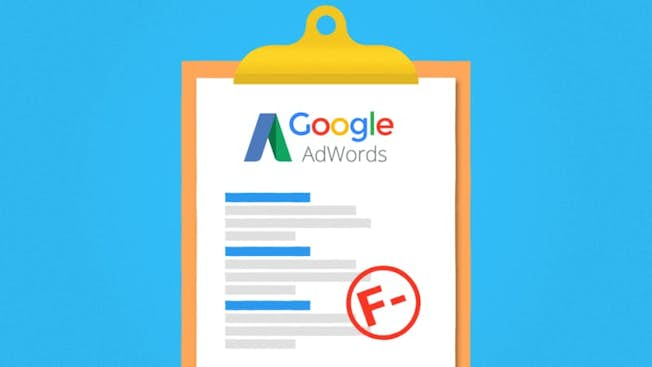
Boost Your Google Ads Quality Score

Mastering the Game: Google Ads and Quality Score
Google Ads, a behemoth in the PPC (pay-per-click) marketing world, has come a long way since its launch in 2000. Back then, only 350 advertisers saw its potential for brand awareness. Today, over 2 million marketers leverage its power, making it a multi-billion dollar extension of Google itself.
This immense popularity translates to a highly competitive landscape. To rise above the noise, you need every advantage at your disposal. One crucial factor that Google considers when determining your ad’s relevance to users is your Quality Score.
Quality Score: The Key to Unlocking Success
Think of Quality Score as a ranking system for your ads. It takes into account factors like keyword relevance, ad copy quality, and landing page experience. The higher your Quality Score, the lower your cost-per-click and the higher your ad gets ranked on the search results page. Here’s the key formula to remember:
Keeping an Eye on Your Score: How to Check Your Google Ads Quality Score
Maintaining a high Quality Score is crucial for optimal ad performance. Here’s a quick guide on how to check your score in Google Ads:
Step 1: Navigate to Keywords
Log in to your Google Ads account and navigate to the “Campaigns” section. Then, select the specific campaign you’d like to review. Within the campaign, click on “Keywords” to see a list of all your keywords.
Step 2: Spot the Speech Bubbles (Optional)
Look for small white speech bubbles next to your keywords. These bubbles indicate the presence of a Quality Score for that specific keyword. If you see them, hover over the speech bubble to view details like ad relevance, landing page experience, and expected clickthrough rate (CTR).
Step 3: Enable Quality Score Columns (If Needed)
If you don’t see any speech bubbles, it means the Quality Score columns are disabled. Don’t worry, enabling them is easy! Click on “Campaigns” and then “Keywords” again. From there, locate the “Columns” menu (usually a dropdown menu or a gear icon) and select “Modify columns.” Check the boxes next to “Quality Score,” “Landing page exp.,” “Ad relevance,” and “Exp. CTR” (all optional depending on what you want to see). Click “Apply” to save your changes.
Understanding Keyword Quality Score: The Key to Effective Ads
Within your Google Ads dashboard, you’ll find the Keyword Quality Score (QS) – a crucial metric for optimizing your ad campaigns. This score, ranging from 1 to 10 (with 10 being the best), reflects how relevant your chosen keywords are to potential customers and how well your ads perform.

Why Keyword QS Matters
A high Keyword QS translates to several benefits:
Lower costs: You pay less per click, stretching your marketing budget further.
Higher ad ranking: Your ads appear in more prominent positions on search results pages, grabbing user attention.
Improved conversion rates: Relevant ads attract more qualified clicks, leading to better conversions.
What Affects Keyword QS? Google considers several factors when determining your score:
Keyword Relevance: How well does your keyword match a user’s search query and intent? The closer the alignment, the higher your score.
Ad Relevance: Does your ad text effectively showcase how your product or service addresses the user’s search intent? Strong ad copy aligned with relevant keywords improves your score.
Landing Page Experience: Does your landing page deliver a seamless experience that builds on the promise of your ad? A user-friendly and relevant landing page positively influences your score.
Expected Clickthrough Rate (CTR): Based on historical data and keyword performance, Google predicts how likely users are to click on your ad. A positive clickthrough rate history can boost your score.
Choosing the Right Keywords
While Google uses search history to determine a keyword’s baseline score, your specific campaigns significantly impact your QS. By focusing on relevant keywords with high search volume and crafting compelling ads with strong landing pages, you can significantly improve your Keyword Quality Score.
The Mystery of Account Level Quality Score
While not officially confirmed by Google, many advertisers believe in the existence of an Account Level Quality Score (ALQS). This score is thought to represent the overall health of your Google Ads account, considering the performance of your ads and keywords over time.
A Reflection of Your Overall Performance
Imagine ALQS as a cumulative grade for your entire account. A low click-through rate or subpar keyword usage across your campaigns could negatively impact this score. Conversely, consistently well-performing campaigns with high-quality keywords could contribute to a strong ALQS.
Why Marketers Suspect ALQS Exists
There’s a reason for this belief: the observed advantage of established accounts in Quality Score. Longstanding accounts often seem to outperform newer ones. This could be partially attributed to Google’s past policy r
estricting the creation of multiple AdWords accounts (now Google Ads). Here’s the logic:
Established accounts have had more time to accumulate data and refine their campaigns.
A history of strong campaign performance could contribute to a higher perceived ALQS.
Unlocking Success: 5 Powerful Tips to Boost Your Google Ads Quality Score
A high Quality Score is the golden ticket to Google Ads success. It means your ads are relevant, resonate with users, and ultimately cost you less. But how do you achieve this coveted score? Don’t worry, improvement is within reach. Here are 5 actionable tips to get you started:
1. Diagnose the Problem with Impression Share:
Impression share reveals how often your ads were shown compared to how often they could have been. Low impression share indicates your ads aren’t reaching their full potential audience. Analyze your data and identify areas where your impressions are lacking.
2. Strike the Keyword Goldilocks Zone:
Keywords are the foundation of your campaigns. Avoid overly broad keywords that get lost in a sea of competition. Similarly, ultra-niche keywords limit your reach. Finding the sweet spot – keywords with relevant search volume – is key to attracting the right audience.
3. Craft Tightly Themed Ad Groups:
Organize your ads into tightly themed groups that align with specific keywords and target audiences. This thematic structure improves ad relevance, a crucial factor for a high Quality Score. Google favors ads that clearly connect to a user’s search query.
4. Maintain Landing Page Cohesion:
Imagine this: A user clicks on your ad expecting a specific product or service. However, they land on a completely unrelated webpage. This disconnect hurts your Quality Score. Ensure your landing pages accurately reflect the message conveyed in your ads, with relevant keywords and a seamless user experience.
5. Prioritize Lightning-Fast Loading Speed:
We all hate slow-loading webpages. It turns out, Google does too! A slow landing page not only frustrates users but also negatively impacts your Quality Score. Focus on optimizing your landing page speed for a smooth user experience.
In this article, we discussed the function and importance of SEO in the digital world. If you are interested, you can learn more about digital marketing and Google advertising by viewing other articles on the Kayoads website.







